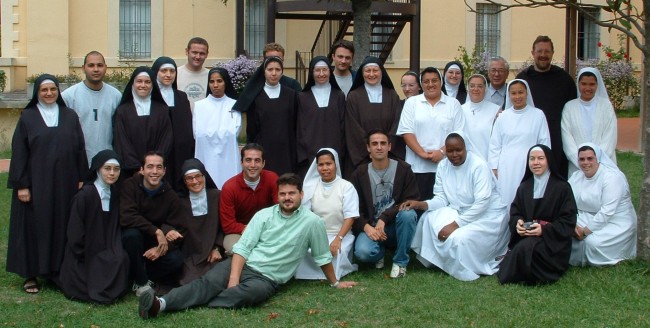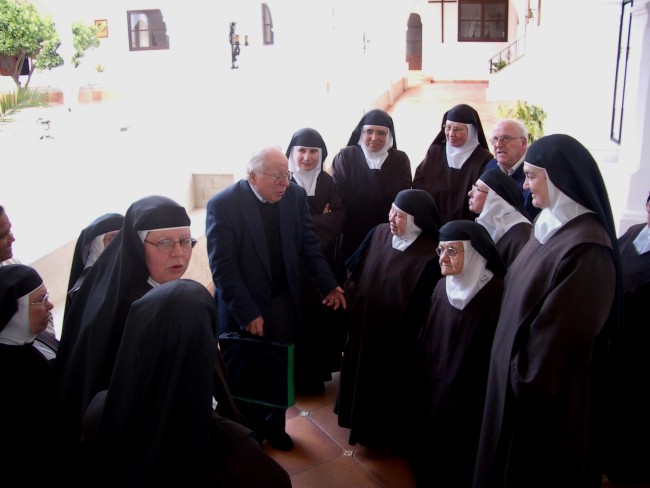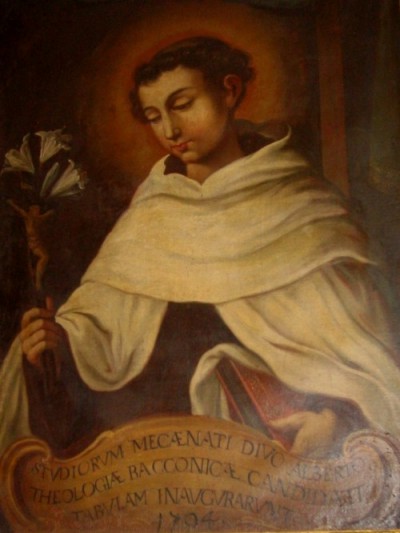|
no. 4 october - december 2004 Culture Activities in the Iberian Region Beyond the publications of the last few years (especially in the area of historical studies), the Iberian Region is moving ahead on several projects of Carmelite culture. A festschrift, in honor of Carmelites Pablo Garrido and Balbino Velasco in gratitude for their long time work in Carmelite research, is being prepared. In the Argo-valentine Province, the library of Onda (Castellón) is being completed with an up-to-date information system that will make the library more useful and accessible to researchers on Carmelite topics. Likewise, the first number of the new magazine, FONTE, under the direction of Luis Gallardo, O. Carm., is in production. The magazine will have two parts: the first will consist of theological studies, history, etc; the second will contain various articles for use in pastoral work and in the spiritual life of the communities. The first issue will be dedicated to the theme "Carmelite Laity" and will provide for reflection, among other articles, the reports on the meeting of the Carmelite Family that took place in Tarragona last July. The Commissariat of Portugal continues the annual publishing of the journal Carmelo Lusitano which covers various topics in Carmelite history and spirituality. Finally, the Baetica Province, at the beginning of the last triennium, sent the various communities the catalogue of the historical archives of the Province which are in Seville. The catalogue of the library in Jerez de la Frontera, which contains a large number of valuable books, has also been distributed. The San Pier Tommaso Institute
Participants in the 2004 program of the San Pier Tommaso Institute at Nocera Umbra, Italy. (Photo courtesy of the Students of the Italian Province)
In 1995, the Italian Province decided to dedicate the college of the professed students to the same saint. It was decided to recover the title of the Institute, never actually closed. The Institute aims to provide continuity to the formation of the professed students of the Italian Province and to focus their Carmelite formation. The Institute, besides conferences given usually on the annual feast of the saint – usually the Sunday after Epiphany—has been organizing for six years a course of history and Carmelite spirituality, recognized by the Theology Faculty of the "Marianum" in Rome. It is required for the professed students and open to any interested religious or lay people. The Institute also has published four Quaderni dell’ Istituto S. Pier Tommaso [Notebooks of the San Pier Tommaso Institute] (Rome, 1997, 1998, 2000, 2002) and Antologia dello Scapolare (Anthology on the Scapular), edited by G. Molinari, Rome 2001. Course on History and Spirituality of the Order The first two weeks of the 3rd year of the Course of History and Spirituality of the Carmelite Order was held in the Carmelite monastery of Nocera Umbra on September 13-24, 2004.Some 34 students took part: 12 professed students, ten sisters of enclosed monasteries, two sisters of the Istituto di Nostra Signora del Carmelo and ten sisters from the Carmelitane Missionarie di S. Teresa del Bambino Gesù. The Carmelite hermits from Monteluro, Italy attended the first two years of the course but were not able to return this year because of community commitments. However, the hermits took part in the opening and then welcomed the group on a visit to Monteluro on the 18 th.The main focus for this year’s study was the past two centuries of the Order’s history, characterized by the crisis resulting from the suppressions and the various revolutions which occurred in the 19 th century and of the various forces which resulted in the recovery, the restoration, and the rebirth of the Order, especially in the 20th century.Some of the principle figures of the era were presented in their historical context. There was interest in the teachings on the foundresses of the women’s active congregations and institutes, Blessed Maria Teresa Scrilli (†1889), foundress of the Istituto di Nostra Signora del Carmelo, and Crocifissa Curcio († 1957), foundress of the Suore Carmelitane Missionarie di S. Tersa del Bambino Gesù. Carmelite Fernando Millán of Spain presented the person and works of Bartolomeo M. Xiberta († 1967). Luigi Borriello traced the figure of St. Thérèse of the Child Jesus, St. Teresa Benedict of the Cross (Edith Stein) and of Blessed Elizabeth of the Trinity. Carmelite Giovanni Grosso spoke on the eminent Carmelites Titus Brandsma († 1942) and Johan Brenninger († 1946). Emanuele Boaga outlined the evolution of the understanding of the Carmelite identity and therefore the charism in the post Vatican II years. He spoke about the emerging features of the concept of the inspirational figures, Mary and Elijah. Giuseppe Midili illustrated the passage from our own rite to that of the Roman rite in 1972 and presented the Order’s santorale with some suggestions for it use. In the final part of the course, which will be held in January, the post Vatican II theology of the scapular, the new Rule of the Third Order, and an overall view of the Order today will be presented with some ideas about what the Rule of Carmel has to say to the world today. Having completed the second cycle of the course, the sessions for the next three years will start in September 2005. It continues to be the desire to build a greater understanding of the Carmelite religious of their own charism and the possibility to creatively develop it in service to the Church today. Archives and Libraries of Oldest Monasteries in Southern Spain Visited: Continued Development Urged as Critical to Preserving Order’s Culture
Fr. Manuel Anguiano who has assisted many of the Carmelite monasteries in his Baetica Province to set up archives and libraries in the monasteries says farewell to the nuns of Aracena during his visit there in Spring 2004. (CITOC photo)
The visits had multiple purposes: to obtain information on the antique books in the monasteries as part of the project to catalogue the Carmelite libraries worldwide; (2) to visit the archives of each monastery; and (3) to encourage the further development and care of these important collections in each monastery through appropriately training people to work with these collections, and the development of facilities which protect the collections. During the visits, a photo record of each monastery and the communities as well as some of the patrimony of each monastery was started. This included pictures of the community, the buildings, statues, paintings, stained glass windows, books, and Carmelite shields. Each monastery was asked to develop a list of books from the 18th century or earlier."In every monastery, the sisters were very happy to be a part of the project to raise the culture of the Order," said William Harry. "It was exciting for me to see the love and care with which they have protected many of the books and Carmelite art over the centuries. They often did so under some very difficult circumstances. They seemed thrilled that I wanted to photograph everything." Fr. Manuel has worked with some of the monasteries over the years and they have well developed library and archive collections which are maintained by vigilant, well trained members of the community. In some monasteries the libraries have been reduced by the various suppressions, wars, and the terrible fact that sometimes in history the monasteries had to sell their possessions in order for the nuns to have food to eat. "There is no intention to remove anything from the monasteries," assured Fr. William. "This was to help the sisters understand that they are very important guardians of a part of our rich history." A CD of the pictures taken in each monastery is being prepared. One copy will go into the archives in Rome and a second copy will be sent to the monastery as a token of thanks for their warm hospitality and willingness to participate in this project.
Approximately two years ago the Spirituality Commission of the Irish Province began a project to distribute books on Carmelite Spirituality to each community. Soon afterwards, the British Province also took up the project. The aim of the project is to provide each community with a solid library of Carmelite texts as well as with the new books on Carmelite Spirituality which may go unnoticed by some communities. The practicalities of the scheme is simple – a list of books is drawn up and a central distributor chosen to send the books to each community on a monthly basis along with an invoice to each community, (or as in the case of the British Province, the invoice goes to the provincial bursar). For the British and Irish Provinces, the Carmelite Book Service run by the Boar’s Hill community of Discalced Friars is the distributor of books. In the British Province, it was agreed that the Donum Dei Communities, the Leaven and the Secular Carmelite Libraries should also receive the books. It is a project which works very well in its simplicity. Each community slowly builds up a collection of solid reading material which requires only one brother in the province to draw up and maintain a list of books. |
|
|
RETURN TO THE INDEX FOR 2004 | RETURN TO THE INDEX FOR THIS ISSUE INDEX OF CARMELITE
WEBSITES |


 Curious
History of a Painting
Curious
History of a Painting